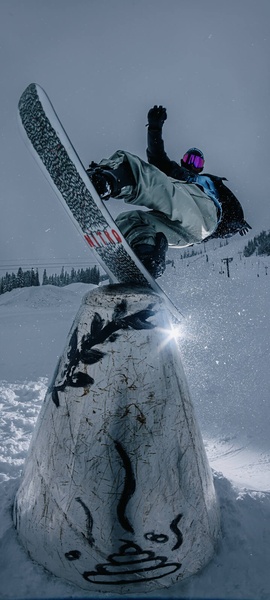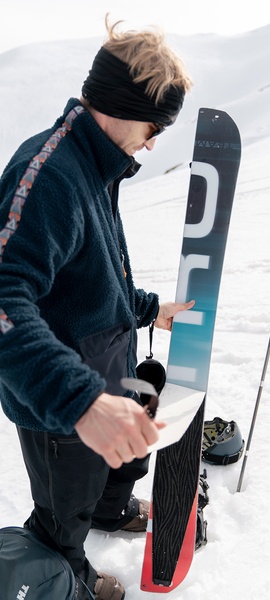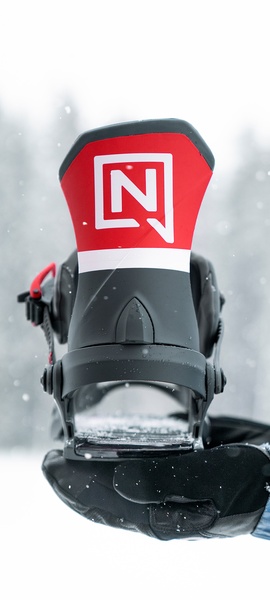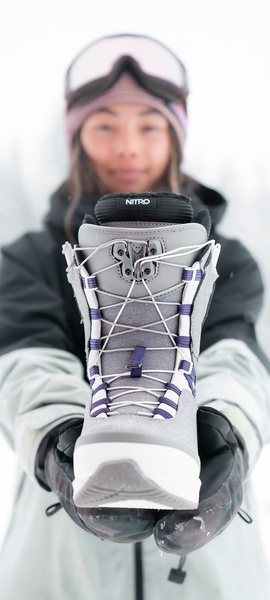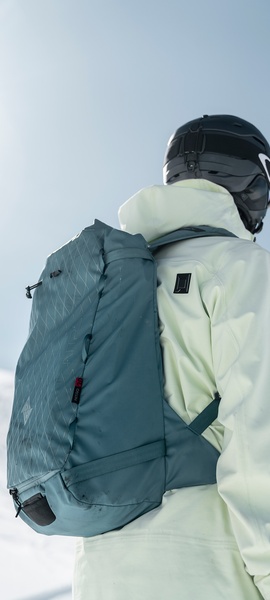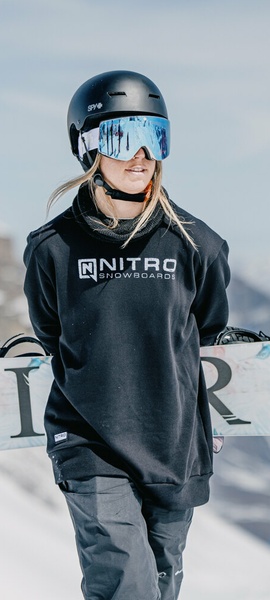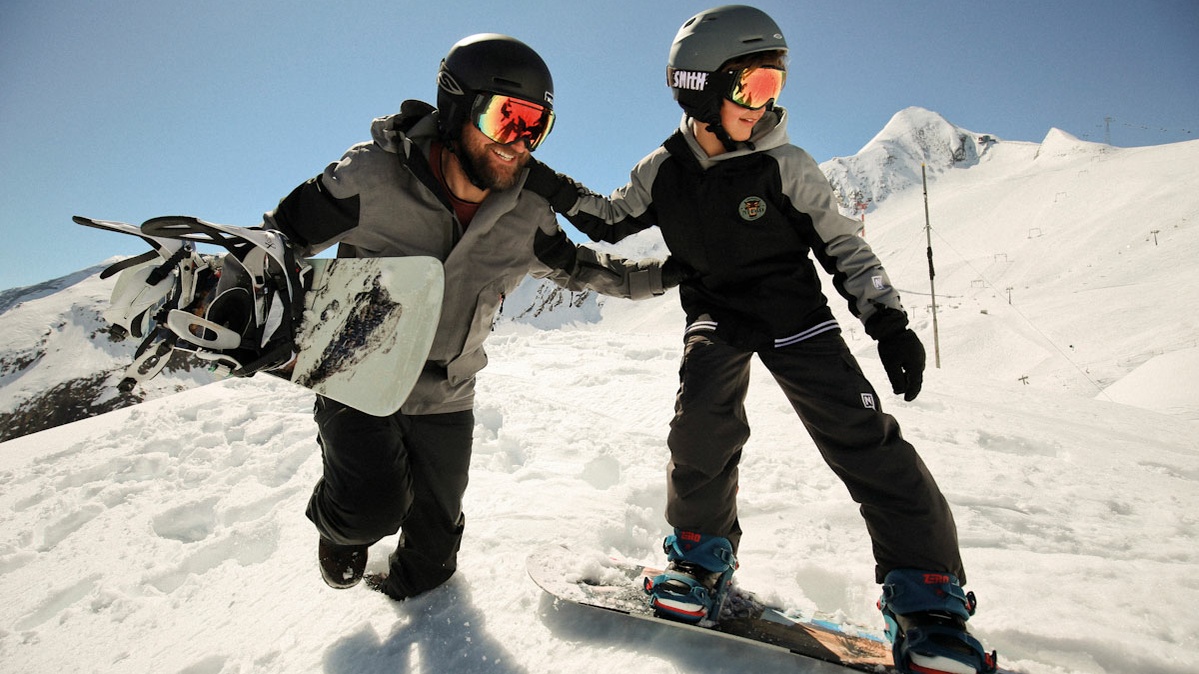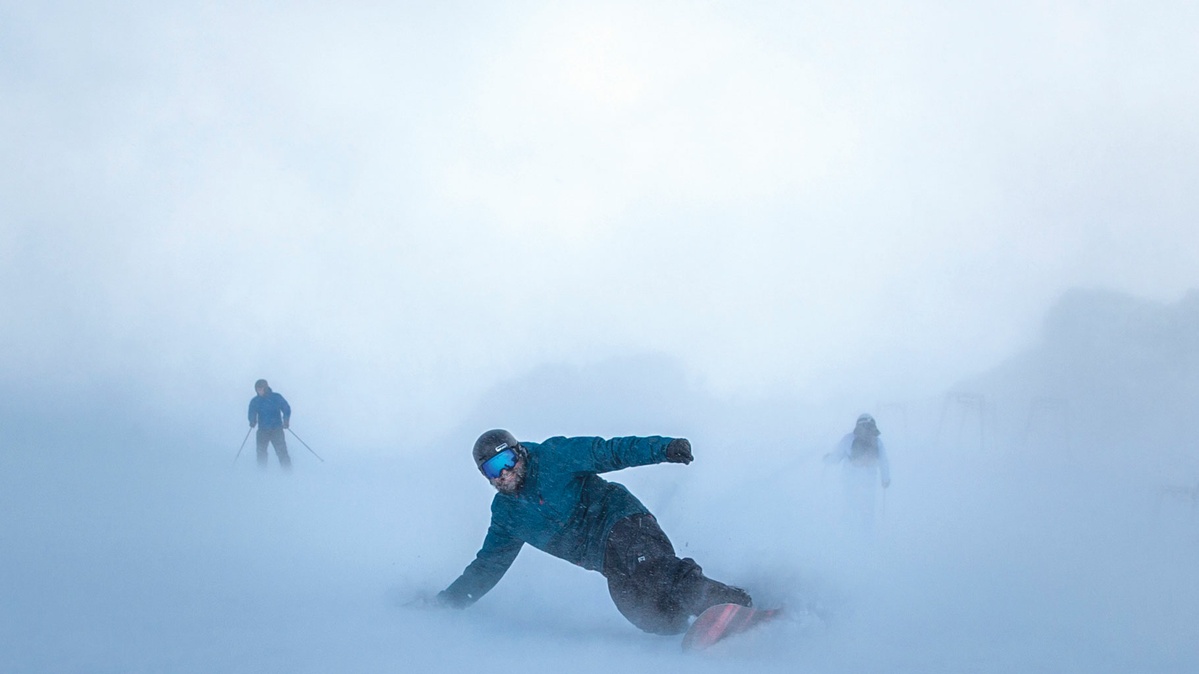
“A few things have shifted, but I’m still a product person”
What was your first exposure to snowboarding and when was this?
The first time I saw photos of snowboarding was in 1978 in Skateboarder Magazine. Being a land-locked teen in the mountains who was skating and who always wanted to surf, I immediately realized that this was going to be my way of surfing.
Why and how do you think your passion for snowboarding evolved into starting your brand? Were you really that into snowboarding in the beginning that you knew this is what you wanted to do and contribute to the world?
By the end of the ’80s, I was 100% emerged in snowboarding: I was a Sims team rider, ran my snowboard camp and school, and was a contributing writer and tester for the leading German snowboard magazine. Still, there was no grand master plan to start a snowboard brand. Eventually, this just happened through a chance of meeting the right people at the right time.
I know you have told this story before, but how, when, and where was Nitro founded?
The first Nitro line has been developed during the Fall of 1989, but the final decision for the brand name was made at Vera’s Café in Ballard, Seattle, on January 6, 1990.
What was one of your fondest memories from the early days?
Looking back, there are quite many. The first time I ever saw someone ride a Nitro board they bought at retail. It still makes me feel proud and honored to see that happen. But it’s also great to remember how much time we were able to spend on riding and testing. The product line was much smaller, and we were breaking new ground with many of our original shapes. We were trying out dozens of shape versions for a new board. I remember spending six weeks straight at Mt. Hood during the summer with the entire team.
What was the first Nitro production snowboard?
Well, there was the entire 1990 line of course. But the very first board I ever designed was a swallowtail powder shaped board called the Retro. Everyone was so into asym raceboards, fast advancements in technology and the first twin shapes. Somehow, I felt a strong urge to design a board that was kind of a throwback toward the surfing origins of snowboarding, hence the name - The Retro. We have stayed true to this and released a new swallowtail board almost every season since the beginning.
Do you remember who the first team riders were?
Multiple World Champion Petra Müssig, Amy Howat from Mt. Baker, WA, Jason Brown, Drew Hicken, Keith Kimmel, Dennis Nazari, just to name few.
What was your original role at Nitro snowboards during the first 5 years?
My main responsibility was on board and binding engineering, and of course marketing, especially in Europe. I was still a more presentable rider, so I also participated in the first videos we did (Go Nitro, Hype).
Who was the original crew?
Aside from my partner Sepp Ardelt and myself, there were graphics designers Bill McGown and Mike Dawson, as well as US Sales Manager Ken Kelly and our distributors in France and Italy, Damien Fenart and Edo Sgarbossa. The family grew quickly, especially with riders and distributors, some of which are still with us today.
What is your role at Nitro snowboards today, 30 years later?
As the line and the company grew, a few things have shifted, but I’m still a product person, with my focus on boards and boots. I try to keep an eye on the overall line, especially hardgoods, while at the same time allowing some of the younger colleagues to take over responsibility for certain categories. Nitro is one of very few remaining larger brands that are rider/owner-operated, so I also spend a good amount of time on the snow and in stores, listening and spreading our vibe. I see myself also as being responsible for keeping the brand identity true to its origins and supporting snowboarding wherever possible.
During the starting stages of building snowboarding products, what were a few of the hurdles that you did not realize would be a hurdle when you started the company?
One of the biggest challenges I was not aware of in the beginning was – and still is – to build a product line that works for all the different markets out there. Riding styles, graphic tastes and budgets are different between countries and we try to listen to our markets and take them seriously, even if they are small.
Changes in suppliers or distributions often happen unplanned for and can throw a pretty unexpected wrench in your system as well. We pride ourselves in good quality, both in products and service, and the above changes have presented challenges we did not expect initially.
Were there any key moments or values that you believe kept Nitro moving forward through the first 20 years?
Above all, it’s a special kind of family spirit that has fueled Nitro from the very beginning. There are very few business-like structures and many shared jobs and responsibilities. We try to keep everyone involved so they feel part of the same team, whether it’s R&D, design, sales or marketing, all the way to the Am and Pro riders.
You have seen trends come and go and return in product design and fashion… what were some of your favorite snowboard trends over the past 30 years?
I enjoyed the atmosphere of departure in the early ’90s. Everything was possible, advancements in tech were happening all over the place and everyone was curious to try out new stuff. On the flip side, I had my worst day of snowboarding on a 151 twin with baseless bindings mounted dead center in three feet of untracked pow, so that was a personal “downer” in trends I guess. The re-introduction of splitboarding 10 years after we first started selling this kind of board was – and still is – a great movement.
Finally, I am super excited about the new open-mindedness towards new board shapes, ideas, and styles that we are experiencing in the community right now.
What snowboard technologies are you most proud of introducing into the snowboard world?
I think it’s safe to say there are many, but here are my top picks, especially since they are still used in our line or even by others in the industry.
- 3-Piece Binding
Being able to center your boot on the board by properly adjusting the binding size is a key achievement we brought to snowboarding and chose not to patent. - TLS
Quick and highly effective, the TLS lacing system is our #1 contribution to better fitting and more comfortable snowboard boots. - Re-Lace System
Finally overcoming the cumbersome lace-lockers was overdue and on-the-fly re-tightening your liner is a feature you need every day. - Railkiller Edge
200% the strength of a regular (ski design) steel edge, the Railkiller Edge is a must-have for any street/park board. - Koroyd® Core
Even if the original technology is not our invention, we are responsible for developing ways to integrate this lightweight yet highly dampening material in our cores so that other snowboard and ski brands are now following. - Mini Disk
Minimized impact of the binding base on the board flex, combined with click-fit angle adjustment. Improving board feel and mounting convenience.
You stated in Nitro´s “28 Winters” movie that; “there was a time that it was not possible to be cool or uncool in snowboarding”, how have you seen the evolution of snowboarding over the years?
Snowboarding went through several stages of evolution in the past decades. After the early days back in the ’70s, we saw a decade of industrialization, where we adapted ski construction technology and materials. We also experienced the development of competition and professional snowboarding. During this time, style was less of an issue, it was secondary which board brand you rode and which type of clothing you wore, everything was fine as long as you spent time riding with others.
This changed during the ’90s when snowboarding ‘came of age’. Professional snowboarding became much more serious and brands were starting to spend massive amounts of money to build their image. The entire sport became much more image-driven and suddenly, riding or wearing the wrong brand meant you’re ‘in’ or ‘out’. Snowboarding was more of a hype and fashion to many people, it overheated and we finally saw the market drop around and just after 2010.
Then how have you seen the Nitro brand evolve - what values have been important to you to promote?
With Nitro, we have been part of these developments since 1990, with the one exception that as a private company, we never had the exorbitant funds of others to get too involved in the hype of the late ’90s and early 2000s. We continued to focus on our family-style way of operating and only invested the money we actually made the year before. Therefore, the ups and downs of the market have touched us less than others. But after 2012, we realized that we needed to do our share to get snowboarding back on track. We realized that we need to take a humbler approach, re-focused on the joy of riding with your friends and the open-mindedness of the earlier days. We did this through our videos, team, general marketing and of course through our product line. Board lines like the Quiver Series or riders like Yung Doli would have not had much resonance 10-15 years ago, but are now a well-accepted part of many facets of snowboarding.
Running a business for over 30 years is a great accomplishment no matter what industry you are in, but even more so in such a unique and niche market like snowboarding - what would you credit for the success of Nitro making it this far?
I think it’s a mix of solid products, no-bullshit marketing and a lot of common-sense business style. We love what we do and avoid making products we would not buy or ride.
If you could go back and change one thing that Nitro has done over the last 30 years what would it be?
Tough – most of the products we created did look like a good idea at the time, even if they flopped, so no regrets. Maybe we should not have discontinued splitboards around 2000, just to bring them back 10 years later.
Global warming and a focus on sustainability is a key factor for all winter sports - how would you like to see the snowboard industry address this moving forward?
First off, let’s all try to avoid green-washing. I’m seeing too many attempts of brands grabbing an eco-friendly feature or two, just for marketing reasons. Global warming is an issue and it concerns us very specifically. I believe looking at the bigger picture is important here, even if it is less marketable. For example, certain inks and glues appear very eco-friendly at first glance and are therefore easy to market. Looking at the bigger picture, many of these inks and glues require extremely high amounts of energy for curing and drying, making their ecological footprint bigger than some more traditional methods. It is important to further develop these technologies until the entire process is more eco-friendly than before. What we need is a more educated view of our entire way of doing business, real development, and less marketing-driven buzzwords.
How is your motivation and outlook for the next 30 years of snowboarding and Nitro? Where, What and How will people be ripping in 2050?
Of course, the environmental changes are the biggest concern and will have a major influence on the future of any wintersport. I believe that snowboarding is well prepared and will be okay if the industry continues to try to be less ‘grand’ and more grass-roots than in the past. We don’t need huge gondolas, massive resorts and après bars. A fun, local resort and a bunch of friends is just fine. The cost of tickets, accommodation, travel, and equipment will continue to rise, so (season) rental will become more important, especially for kids. Splitboarding will probably not explode but continue to grow. If we keep the current open-minded, fun-driven spirit, boards will continue to be diverse, giving everyone the possibility to find their favorite stick, whatever style of riding they may be into.
How can the average person support the future of the snowboard community moving forward? What would you tell them to do?
Support smaller local resorts and dealers even if they may not have the full offering of their larger counterparts. Try to make sure (your) kids have a chance to get out there and shred, but above all: get out there and ride as much as you can, share the joy with your friends and greet fellow snowboarders with a smile!
